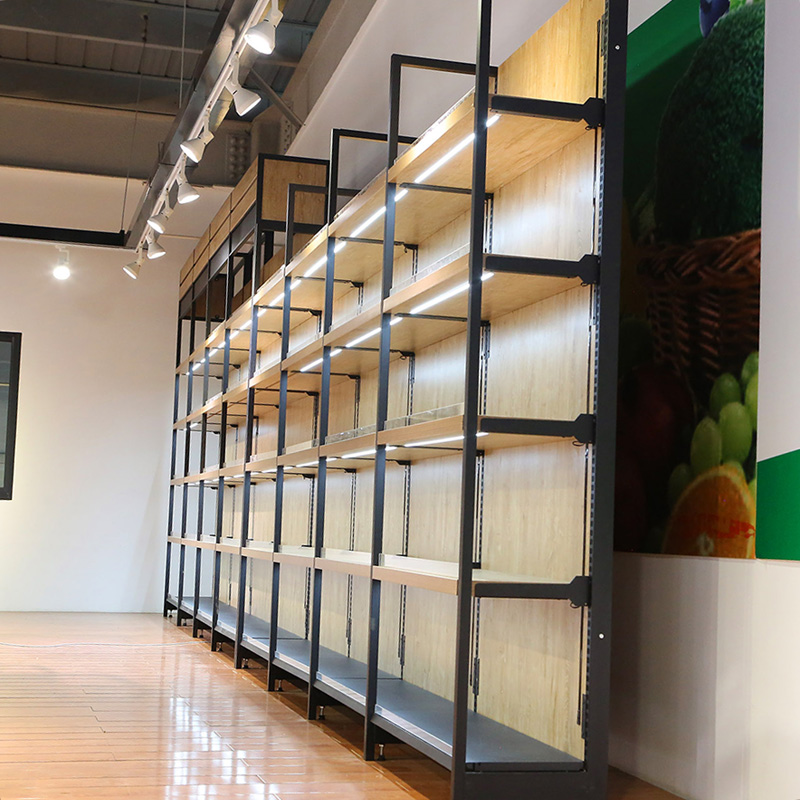supermarket shelving design can broadly influence the optimization of aisle widths for customer flow and accessibility. Here are some of the ways shelf design contributes to this:
Shelf depth: Choosing the right shelf depth is important to optimize aisle width. If cabinets are too deep, they may reduce the area available for customer activities, causing congestion and impeding accessibility. Shallow shelves, on the other hand, limit the ability to effectively display merchandise. Therefore, it is important to find the right balance of rack strength to allow ease of customer movement while maximizing storage capacity.
Shelf height: The height of cabinets also plays an important role in aisle optimization. Tall cabinets can block visibility and make it difficult for customers to find and access products. Therefore, adjustable or staggered shelf heights are often used to improve accessibility and ensure that customers of different heights or physical abilities can reach items.
Shelf layout: The layout of the shelf machine must be designed to facilitate the flow of customers. Straight aisles and evenly spaced cabinets are efficient, allowing customers to move through easily and without obstructions. However, strategically placed abandoned end caps or angled shelves can create noticeable visual interest in a long aisle and avoid monotony.

Signage and Product Organization: Appropriate signage and on-cabinet aids consumer use. Well-labeled areas and clear prompts can help customers discover specific products without spending too much time searching or walking down several aisles. This reduces congestion, improves convenience, and optimizes aisle widths by minimizing unnecessary traffic.
Clear Aisles: Shelf design should include designated and accessible walkways between aisles. These aisles should be large enough to easily accommodate customers carrying shopping carts, strollers, or mobility aids. By ensuring clean, wide sidewalks, customer flow can be streamlined and accessibility can be more beneficial, especially for people with disabilities or limited mobility.
Overall, combined with thoughtful shelf design that considers elements such as shelf strength, height, format, signage, product agency, and clear aisles, aisle widths can be optimized to improve buyer mobility and accessibility in a retail environment.

 English
English русский
русский Deutsch
Deutsch Español
Español 中文
中文










